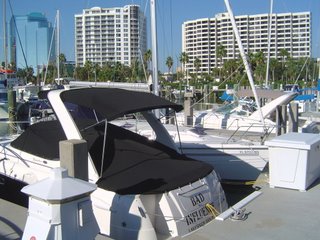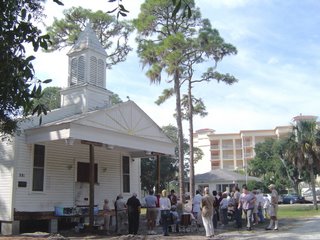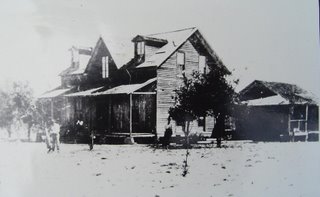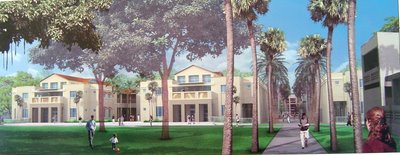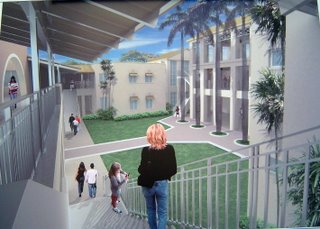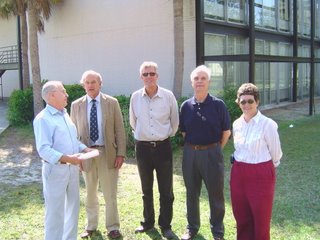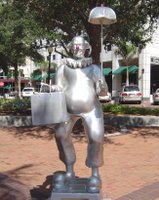About 50 interested people attended a "workshop" sponsored by developer Ron Burks in an effort to find common ground for his proposed project on School Ave.
The workshop was facilitated by Jerry Sparkman, architect at
Totems Inc. The meeting tonight was described as the first step in a three phase process: community outreach, design charette and implementation.
Introductory remarks focused on recent examples of density with good design as noted in the principles of new urbanism. Five examples (several by noted designer
Stefanos Polyzoides) were described that showed densities ranging from 35 to 80 units per acre that consisted of buildings of 2 to 4 stories in height. One example showed a 100 u/a project with 7 to 8 story heights. The
Spanish Oaks apartments in Laurel Park was also shown as an example of 50 u/a.
Here are some pictures, like the ones shown, that indicate what various densities can look like.
Nearly all the participants indicated that these projects showed good design and could work here: they were not shear, block buildings, but consisted of a variety of building types that looked more like single family housing. The low height was also a significant factor.
Concern was expressed about the traffic that would result from this proposal. Even though the traffic study showed no level of service degradation, the "cut through" streets in Alta Vista were not included in the study. This is the concern expressed by the neighbors.
Connectivity of the surrounding neighborhood to Payne Park was discussed. Pedestrian access through the proposed project would help this. It was pointed out that a major element of new urbanism is connectivity.
Burks indicated that his goal was to get as many ideas as possible on the table, he would include as many ideas as was possible.
Near the end of the evening, when the ideas were being summarized, Burks indicated that height and density had already been approved by the commissioners and were not part of the discussion. These are required to get affordable housing.
A discussion of the affordable housing indicated that building 4 would contain all affordable housing and would have the same floor plan as the other two large buildings.
Comments were made that today’s view of affordable housing projects includes mixing them with all of the market units; the days of stand alone "Cabrini Green" type projects were no longer acceptable. Even the redevelopment of Sarasota’s public housing will mix market rate rentals and home owner units with low income public housing and subsidized units.
It would seem that the size of the affordable units in the School Avenue proposal could be adjusted so that these units could be mixed with higher priced units and achieve lower overall project heights. The reason that the developments pictured at the beginning of the evening were 2 to 4 stories is because the units were smaller in square footage.
Stefanos Polyzoides has indicated that:
Affordable housing and workplaces should have the following characteristics:
1. Building type should be indistinguishable from market rate housing or workplaces.
2. They should be provided in a variety of building types.
3. They should be provided in smaller increments.
4. They should be mixed with market rate housing and workplaces.
These are the ideas that were articulated tonight, they need to be creatively addressed if common ground is to be found for this proposal.
The ball is back in Ron Burks' hand. He has indicated he would open the process up, ask for input and evaluate the ideas. If he insists on keeping the same height and density with the same block face design not much will have been accomplished. However, the opportunity is available to use some new thinking to creatively find a solution to the issue. Can community input and developer good faith result in a well designed project that the entire community can support? We will find out.
We hope the process continues and that many of the ideas presented can be worked into the project and the result is a project about which everyone can say "This turned out to be a wonderful project for our city."






